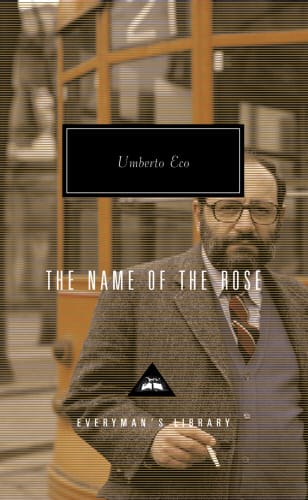Exploring “The Name of the Rose”: Plot, Themes, and Legacy
A deep dive into Umberto Eco's The Name of the Rose—plot, themes, history, and why this medieval mystery still resonates today.

Introduction to The Name of the Rose
When Italian scholar Umberto Eco published “Il nome della rosa” in 1980, he blended a gripping murder mystery with a labyrinth of theological debate and semiotic puzzles. Set in a remote Benedictine abbey in 1327, the novel invites readers into a world where faith collides with reason, and language itself becomes a battlefield. The book astonished critics and casual readers alike, selling millions of copies worldwide and earning the prestigious Strega Prize. It remains one of the most influential historical novels of the late twentieth century, acclaimed for its depth, erudition, and page-turning suspense.
Plot Summary
The story unfolds over seven taut days, narrated retrospectively by Adso of Melk, a novice accompanying the Franciscan friar William of Baskerville. The pair arrive at the abbey to mediate a theological dispute between the pope’s envoys and a delegation of Franciscan monks accused of heresy. Almost immediately, a young monk is found dead in circumstances that appear to echo the Book of Revelation. William, a disciple of logic inspired by William of Ockham and Sherlock Holmes alike, employs empirical observation to investigate, while Adso documents his mentor’s deductions in painstaking detail.
As the deaths mount—each corpse discovered in a manner mimicking apocalyptic imagery—the abbey’s secretive library reveals itself as the novel’s true labyrinth. The forbidden second book of Aristotle’s “Poetics,” rumored to explore comedy and laughter, becomes the macabre catalyst. Eco pairs cloistered anxieties about knowledge with medieval fears of heresy, crafting a finale in which intellectual curiosity literally and metaphorically goes up in flames.
Main Characters
William of Baskerville: A sharp, rational detective figure who champions empirical inquiry over blind dogma.
Adso of Melk: The youthful narrator whose coming-of-age mirrors the reader’s own grappling with doubt and faith.
Jorge of Burgos: A blind, zealously conservative monk determined to suppress laughter and new ideas, echoing Jorge Luis Borges.
The Abbot: Torn between papal politics and the abbey’s crumbling authority, he embodies institutional insecurity.
Major Themes and Symbols
Faith vs. Reason
The novel’s core tension pits rational inquiry against doctrinal rigidity. William’s deductive method clashes with Jorge’s belief that certain knowledge must remain hidden to preserve divine order.
Power of Laughter
The suppressed Aristotelian treatise on comedy symbolizes the church’s fear that humor could undermine hierarchical control. Eco elevates laughter from trivial pastime to revolutionary force.
The Labyrinth
Both the literal library maze and the intricate narrative structure embody the labyrinth, challenging readers to navigate layers of meaning, unreliable narration, and textual references stretching from Thomas Aquinas to Conan Doyle.
Historical and Cultural Context
Set during the Avignon Papacy, the novel reflects real tensions between the Holy See and reformist Franciscans advocating apostolic poverty. Eco, a medievalist, meticulously re-creates debates on heresy, inquisition, and scholasticism, giving modern readers a passport into Europe’s intellectual crossroads. His depiction of manuscript culture—ink-stained scriptoria, chained volumes, glass lenses—underscores how fragile knowledge transmission was before Gutenberg.
Narrative Style and Language
Eco writes in a pastiche of genres: detective fiction, historical chronicle, and postmodern metafiction. Latin phrases mingle with vernacular Italian, German, and French, mirroring the multilingual mosaic of medieval Europe. Footnotes and intertextual references reward attentive readers yet never fully demystify the novel’s riddles, reinforcing Eco’s thesis that interpretation is infinite. The result is both scholarly and thrilling, inviting multiple re-readings.
Adaptations and Legacy
Jean-Jacques Annaud’s 1986 film adaptation, starring Sean Connery as William and Christian Slater as Adso, condensed Eco’s labyrinth into a two-hour feature while preserving its gothic mood. In 2019, an eight-part Italian-German miniseries delved deeper into subplots and political intrigue. Beyond screen versions, the novel has inspired board games, operas, and countless academic papers on semiotics and medieval studies. Its influence reverberates in later bestsellers like “The Shadow of the Wind” and “The Da Vinci Code,” which marry intellectual clues with commercial storytelling.
Why the Novel Remains Relevant
In an era of information overload and contested truths, “The Name of the Rose” feels eerily current. It warns of the dangers of censorship, the weaponization of religion, and the seductive pull of conspiracy. William’s insistence that “the most dangerous enemy of reason is not faith but fury” resonates amid modern culture wars. The novel also champions interdisciplinary curiosity—melding philosophy, science, and art—a model for today’s increasingly siloed academic landscape.
Final Thoughts
More than four decades after its publication, “The Name of the Rose” endures as a masterclass in storytelling that entertains as it enlightens. Eco challenges readers to question authority, embrace ambiguity, and laugh in the face of dogma. Whether you approach it as a whodunit, a historical epic, or a meditation on signs and meanings, the novel’s many layers reward the effort. Like the vast library at its heart, it invites us to lose ourselves in the pursuit of knowledge—even at the risk of getting burned.



